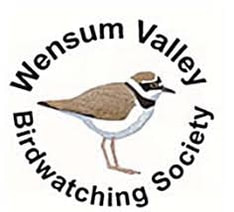|
Speaker: Gordon Hamnett Reporter: Sue Gale Gordon Hamlett is the author of the much admired ‘Best Birdwatching Sites in the Scottish Highlands’ and this talk tells the story of its production. Gordon first visited the area in the late 1980s when he was thrilled to see his first Red Squirrels, Crested Tits and Ospreys. He started to write articles about the birds of the area for Birdwatch magazine, after which he was asked to write a book about where to see birds in the Highlands, to sit alongside similar volumes about Norfolk and Devon and Cornwall. Gordon discussed the problem issues in such an undertaking – he wanted to include creatures other than birds, and to embrace the history of the area as well as something about the many different habitats. Gordon decided that the way to approach birding in the Highlands was to focus on day trips rather than on individual sites. This way he could include information about viewpoints, history, tourist attractions and facilities, as well as the vital advice on where to see the special birds of the Highlands. But the project was fraught with difficulties! Firstly, it was hard to come up with maps that would show sufficient detail and yet might cover a tour of 20 or 200 miles. Then there is the problem with the unreliability of birds. Golden Eagle territories are huge, often spanning 40x20 miles, so how should he tell people where to look without divulging the nest sites that are carefully protected? Spotted Crakes breed on Inch Marshes, but they tend to call at night and are hardly ever seen. Rare breeding birds are lovely to see but Gordon did not think he could include information about their presence for fear of promoting disturbance. Similarly, he couldn’t reveal the location of known leks. He concluded that he could only include birds already in the public domain. There is also the difficulty that the birds are often hard to find, even when you do know where to look. Snow Buntings and Dotterel are much more remote because of the lack of snow at easily reached levels, and Ptarmigan are even worse. Or maybe the identification is the problem, as with Scottish Crossbills. These had been recognised as an endemic species, but further studies have shown that there is such an overlap between Common, Scottish and Parrot Crossbills that they may
not be separate species, especially as the ‘unique’ call of the Scottish variety has been found not to be unique after all. The provision of directions for viewing sites was hard in such large areas, particularly if possible nest sites were involved, but Gordon found that he could often use the location of other attractions to help. Many archaeological sites are both well-mapped and may have designated car parks, so he could use these. They also tend to be constant, unlike the birds. And things often change between writing and publication. No wonder Gordon decided not to produce a third edition of his book. Instead, he recommends that people use the free App provided by the Scottish Ornithologists Club (SOC) which you can find on-line. The guide includes recent sightings and maps, and is free. Just search for Where to Watch Birds Scotland. Lastly the Molotovs of the title were explained. Gordon was birding the Highlands as usual when he stumbled upon a training exercise, complete with riot police and petrol bombs! He was very amused when the order to ‘Stop rioting’ was given so that he could proceed, followed by ‘Riot!’ when he was safely out of the way. A safer seeming but similar encounter was with a photo shoot for Vogue handbags. All sorts of unexpected extras when birdwatching! Many thanks to Gordon for an entertaining evening, even if he may have deterred any budding authors in the audience.
0 Comments
Leave a Reply. |
Please feel free to read through our reports from our monthly indoor / online meetings. Archives
May 2024
Categories |

 RSS Feed
RSS Feed
